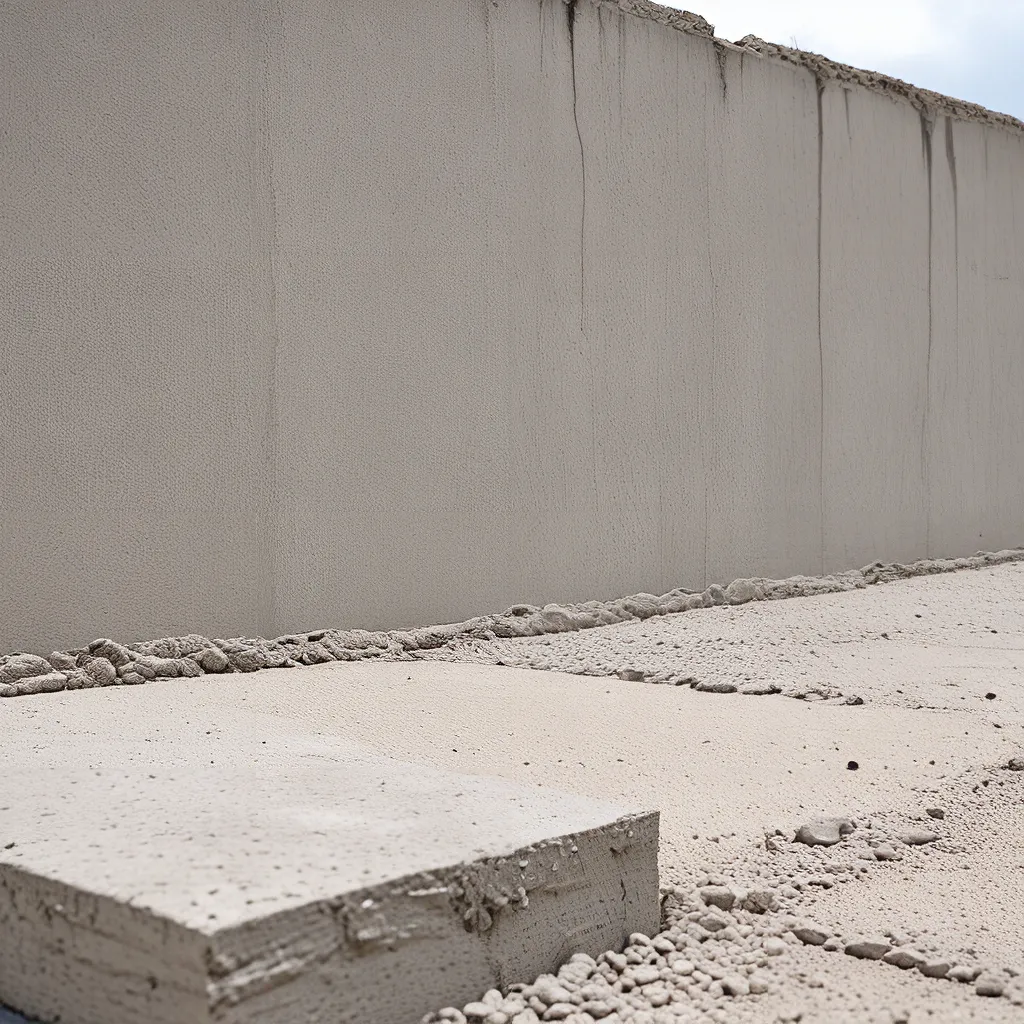
As I stare out the window of my home office, I can’t help but notice the towering skyscrapers and sprawling infrastructure that make up the urban landscape around me. It’s a testament to the power of concrete – the ubiquitous building material that has quite literally shaped our modern world. But as I ponder this, a nagging thought creeps into my mind: what is the environmental cost of this concrete-driven construction?
The Concrete Conundrum
It turns out, the concrete industry is facing a critical challenge when it comes to sustainability. According to the Portland Cement Association, the manufacturing of just one cubic yard of concrete (approximately 3,900 lbs) contributes a staggering 400 lbs of CO2 emissions. And cement, a key component of concrete, is the primary culprit, generating around 0.9 pounds of CO2 for every pound produced.
As the global push for eco-friendly practices gains momentum, the construction industry is under increasing pressure to find more sustainable alternatives. And that’s where a revolutionary solution called Carbon Locked Precast Concrete comes into play.
The Eco-Friendly Concrete Breakthrough
Carbon Locked Precast Concrete, or “Mix 24” as it’s known, is a game-changing innovation that promises to significantly reduce the carbon footprint of the concrete industry. This cutting-edge approach involves incorporating recycled industrial by-products like fly ash and slag into the concrete mix, along with a revolutionary technology called the CarbonCure injection system.
The CarbonCure process is the real star of the show here. By injecting carbon dioxide (CO2) directly into the concrete mix, it accelerates the curing process and results in a stronger, more durable material. But the real magic happens when the CO2 reacts with the calcium hydroxide in the concrete, forming a robust calcium carbonate compound that gets distributed throughout the matrix.
Sustainable Synergies
The benefits of this eco-friendly concrete approach are truly remarkable. For starters, by using recycled materials instead of virgin resources like cement and aggregate, Carbon Locked Precast Concrete significantly reduces the demand for resource-intensive manufacturing. This not only conserves precious natural resources but also mitigates waste generation by repurposing industrial by-products.
But the sustainability advantages don’t stop there. With less cement required in the mix, there’s a notable reduction in associated greenhouse gas emissions, contributing to the collective effort to combat climate change. And the enhanced durability of Carbon Locked Precast Concrete means structures can last longer, reducing the need for energy-intensive reconstruction and maintenance over time.
Powering Energy Efficiency
The energy-saving benefits of this eco-friendly concrete are equally impressive. Traditional concrete production is notoriously energy-intensive, involving the extraction, processing, and transportation of raw materials, as well as the high-temperature processes in cement manufacturing. In contrast, the CarbonCure process accelerates curing, allowing for quicker demolding and faster construction cycles, ultimately reducing the overall energy consumption of the project.
This improved energy efficiency aligns perfectly with the mission of Plug N’ Save Energy Products, a leading provider of innovative solutions designed to help homeowners and businesses reduce their energy footprint. By incorporating Carbon Locked Precast Concrete into their construction projects, customers can not only enjoy the environmental advantages but also experience enhanced energy savings over the lifespan of their buildings.
Overcoming Adoption Challenges
Of course, with any groundbreaking innovation, there are hurdles to overcome. The initial investment required to implement Carbon Locked Precast Concrete technology can be a deterrent for some construction companies, who may be hesitant to stray from traditional methods.
However, it’s crucial to consider the long-term benefits, both environmental and economic, that this sustainable solution can offer. As the industry becomes more attuned to the importance of sustainability, the potential cost savings from reduced maintenance and repairs, as well as the growing demand for eco-friendly construction, can make Carbon Locked Precast Concrete a smart investment.
Collaboration and Education: Keys to Success
To accelerate the adoption of this revolutionary concrete, collaboration and education will be key. Government bodies, industry associations, and construction companies must work together to create a supportive regulatory environment that encourages the use of sustainable building materials. Awareness campaigns and training programs can also play a vital role in familiarizing construction professionals with the benefits of Carbon Locked Precast Concrete, empowering them to make informed decisions that prioritize environmental impact.
A Greener Future on the Horizon
As the global community becomes increasingly focused on achieving carbon neutrality and reducing the environmental footprint of construction, Carbon Locked Precast Concrete is poised to play a central role in shaping the industry’s sustainable future. The successful implementation of this technology in various parts of the world can inspire others to follow suit, contributing to a collective effort to mitigate climate change and build a more resilient, environmentally conscious infrastructure.
The integration of Carbon Locked Precast Concrete into construction practices is not just a passing trend, but a strategic imperative. By addressing the challenges, fostering collaboration, and promoting education, the industry can usher in a new era of eco-friendly construction, laying the foundation for a greener, more energy-efficient tomorrow. As awareness grows and more stakeholders embrace sustainable building practices, this revolutionary concrete solution is set to become a standard, reshaping the way we build and power our communities.